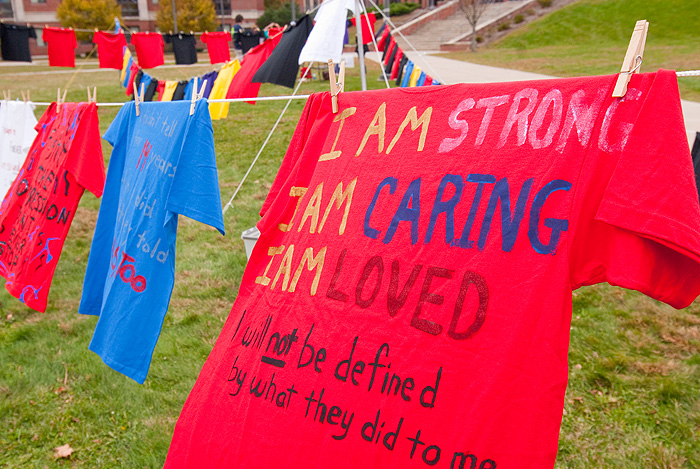I
am interested in the use of personal writing in the practice of cognitive
behavioral therapy. This sort of therapy is based on the idea that by enabling
persons to cognitively interpret and therefore react to a situation in a
positive way, they can combat disordered thinking and feelings like anxiety,
depression ect. Personal writing seems to me to be a perfect exercise in this
type of therapeutic practice. This reminds me of what Julier discusses in her
chapter “Voice on the Line,” in which she discusses the power of language through
informing forward progress. This is exemplified by a tee shirt included in the
Clothesline Project, which said “I have strength / I have control / I have
self-esteem / I have Power,” linguistically moving victim from past to future
in which one has all these attributes that allude to the idea of being healed. This
kind of self-talk falls along the lines of the idea that if you can tell
yourself you can do something, you can. Often, this positive, future-driven
self-talk is essential to replacing the kind of blaming, negative self-talk
victims often find themselves engaging in.
Additionally, I am very interested
in the power of this kind of negative self-talk, which can also take the form
of writing, and how we can be sure to keep this out of our personal writing when
attempting to heal. When I was active in my eating disorder, I used to write
journal entries in which I would scold myself for eating too much food or not
meeting my goal weight. This kind of writing actually furthered my very
dangerous behaviors, clearly the exact opposite of what we hope to achieve with
writing for healing. Many times this semester while reading chapters in the
text on bringing writing for healing into the classroom, I worried about the
idea that a student, consciously or unconsciously, could practice this personal
writing in a negative manner like I once did, further perpetuating things like depression,
anxiety or low self-esteem.
Finally, if I can find a way to tie
this in to my ideas above, I would like to look into fictional writing as
healing. About 5 years ago now, I read a book titled Wintergirls, in which the author wrote a fictional piece from the
POV of a teenage girl with an eating disorder. While the author had never suffered from a disorder herself, she claimed to
have done research and interview of people who had and attempted to write the
piece from that perspective. One could view this piece as a form of writing for
healing, especially seeing that the main character does confront her unhealthy
ways and ends up “healed” in the end. However, the book was a huge trigger for
me, and instead of seeing it as a manuscript for healing, it ended up fueling a
lot of my already present negative thoughts and feelings about myself, food and
my body. I can see this being the type of text that a professor might be interested
in complimenting a writing and healing-based class, however this could be
problematic for students as it was for me. This brings me to the example of the
student in chapter eleven who was enrolled in the class on suicide and found their
once-dormant depression triggered by the work of Sylvia Plath as she described
her experience with depression. The author of this chapter included this information,
but proceed to sort of glaze over it, stating that this was the only student in
the class who had expressed having this kind of experience, and that he ended
up coming back out of the depression by the end of the semester. I think we
need to be much more cautious about such situations when dealing with
writing/text that could be triggering to students. 

